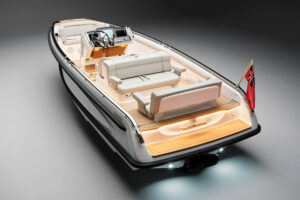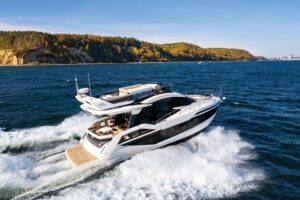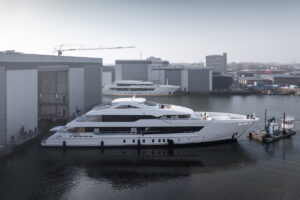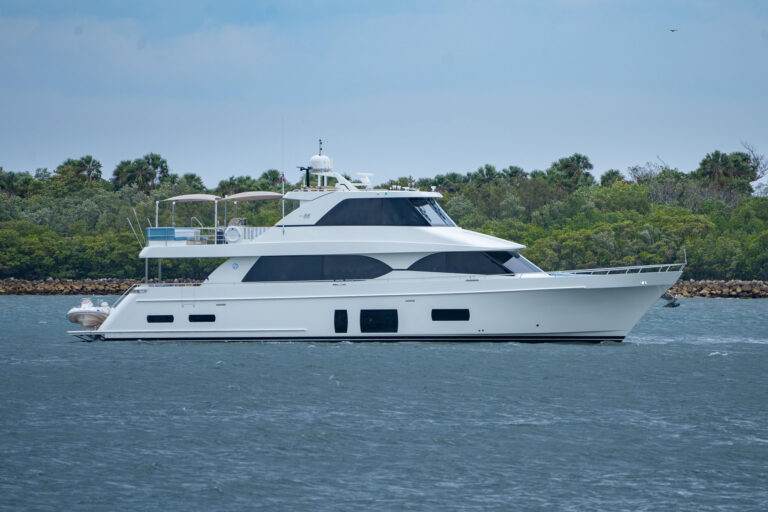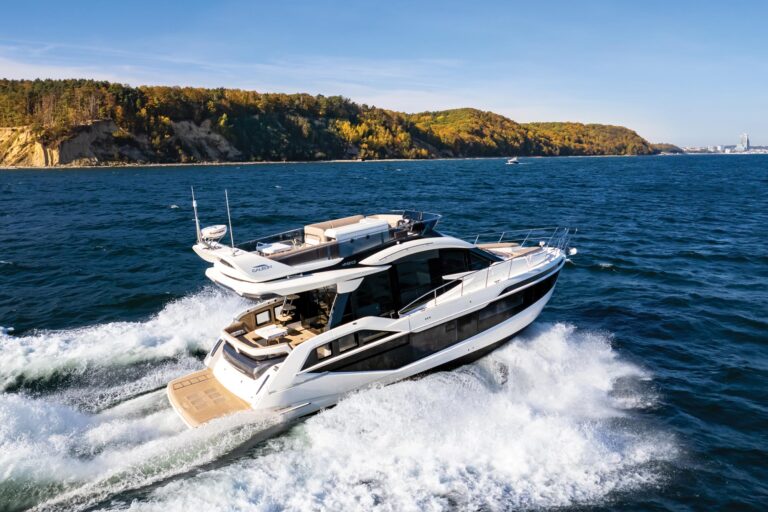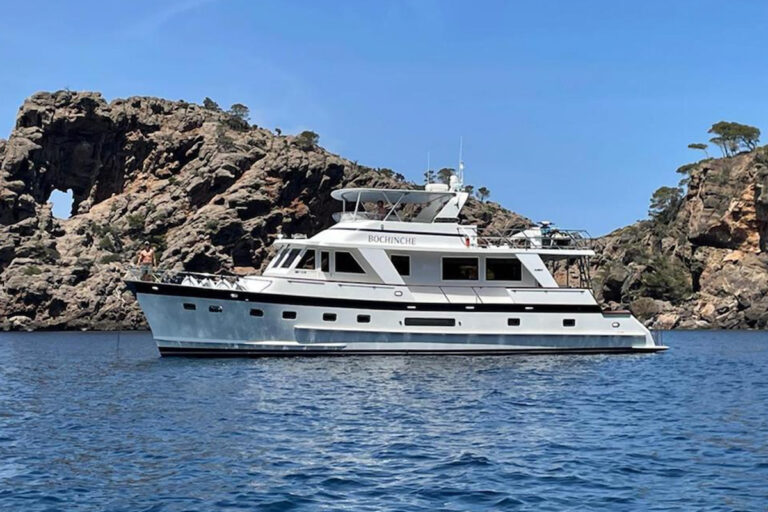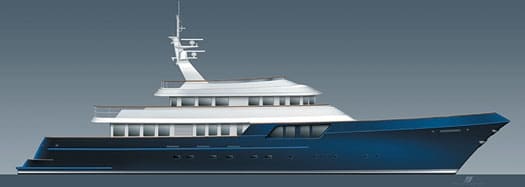
yachting/images/magazine/2005/052005/nd_marco_525x187.jpg
The question always comes during or just after yet another major boat show, “Well, what have you seen that’s different?” Too often, my answer is a jaded “Not much,” but last fall’s Ft. Lauderdale International Boat Show, my 31st straight, was an exception. I sat down for a private interview with Ron Holland, the renowned sailboat designer, as he presented the plans for his latest design, a 148-foot motoryacht. Yes, motoryacht-no sails, no spars, no ballast, though the influence of a lifetime spent studying water flow and squeezing the last drop of speed out of a finite amount of wind power shows through in the motoryacht’s lines.
The Transocean Explorer, Holland’s first large motoryacht since the Delta-built Affinity, promises to be something very special indeed, and that is due in large part to what Holland calls the “knowledgeable design brief of a very experienced yachtsman,” currently the owner of an Abeking & Rasmussen sailboat. Holland continues, “My goal was to marry this experience with proven commercial naval architecture. This would place operational efficiency and seakeeping ability in the most extreme geographic regions at a higher priority than achieving the maximum accommodation. So often accommodation volume seemed to be the primary influence in many existing motoryachts.”
For a designer, there is nothing better than working with an owner who knows what he wants and understands the steps that must be taken to get him there. Regardless of the amount of money spent, the laws of nature cannot be overcome. “Operational efficiency” in this context means lots of cruising range at reasonable speed, 15 knots in this case, with minimal fuel usage. That is best achieved by combining a long slender hull designed specifically for operation at displacement speed; minimal displacement, because even with a non-planing hull, weight is important; and a single propeller to develop the most thrust from each drop of fuel.
This first number of the planned Marco Polo Series, with Maritime Concept and Construction as the builder of record and Cheoy Lee as the main subcontractor, clearly has taken those principles to heart. The Transocean Explorer’s profile shows much less topside area than most yachts of her length. Nearly a third of the main deck is open bow, and it is used for tender stowage, keeping the stern free of garages and the upper decks open for owner and guests-less than half of the main deck length is occupied by the house, and a good part of that is inset to allow open decks on both sides.
The upper “owner” deck is enclosed for less than a third of the yacht’s length and is fully inset. The top deck is totally open, with no enclosure at all. What all of this adds up to is a yacht with greatly reduced topside volume and weight, thus a lower center of gravity for more stability and considerably less displacement overall. There’s also a lot less windage, so less rolling in a blow.
While the stern lines can accommodate twin screws, they are best suited to the single propeller that the first boat will carry. A single propeller, in general, offers better overall propulsive efficiency than twin screws. Most of the world’s tankers and cargo ships are fitted with a single, large centerline screw. In the event of loss of the main propulsion system, the yacht can proceed indefinitely at six knots, using the directed thrust of the Schottel bow thruster, which is powered by its own diesel engine.
As I reviewed her drawings and specifications, it was clear that the Transocean Explorer is, in many ways, a direct descendent of the magnificent steam yachts of a century ago, long sleek vessels leaving so little wake that the only thing remaining after their passage was a memory. She is a refreshing return to sound and well-proven principles of professional design, updated with the latest in modern technology, based on a clear and sensible plan for serious extended cruising. She is a wonderful but all-too-rare example of what can be accomplished by a talented and dedicated design team when maximum enclosed volume is not the guiding specification. Construction began this spring and delivery is expected in 2007.
Contacts: Maritime Concept & Construction, (011) 33 608642050; hourisoun@wanadoo.fr. Ron Holland Design, (011) 353 214774866; www.ronhollanddesign.com.

